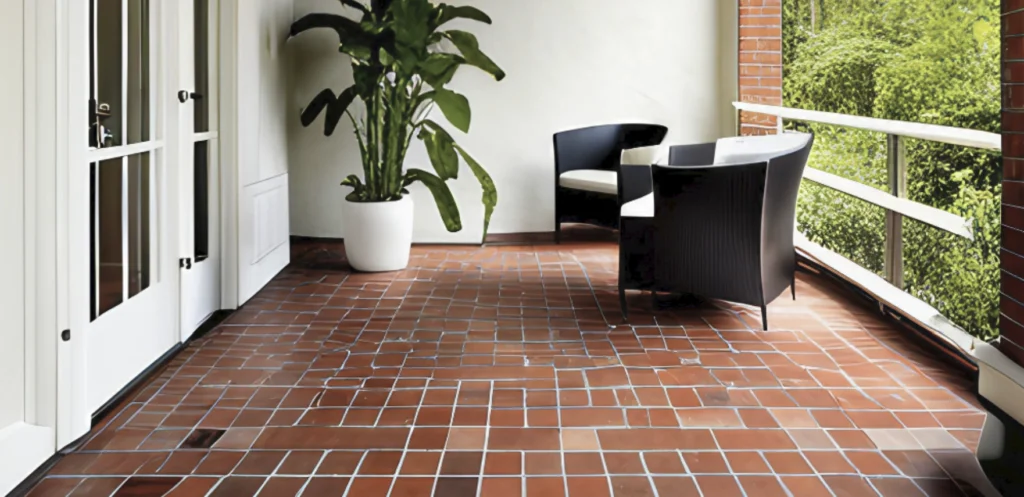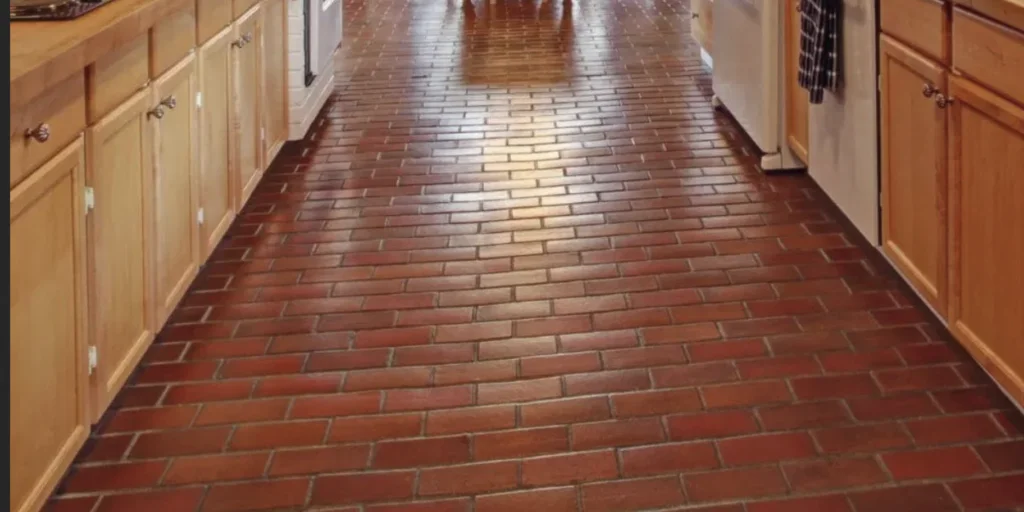Brick flooring is a timeless choice that brings a rustic charm and durability to any space. For centuries, brick has been a preferred building material because of its sturdiness, and it remains a popular choice today, especially for unique interior styles. In this guide, we’ll break down everything you need to know about brick flooring—from its benefits and drawbacks to installation considerations and maintenance tips.
Brick flooring is a versatile and unique choice that adds a sense of history and craftsmanship to any room. Made from clay and other natural materials, brick flooring is resilient and can be adapted to a range of designs, from rustic farmhouse to chic urban loft.
What Is Brick Flooring?

Brick flooring consists of clay pavers, similar to the bricks used for walls but generally thinner. These pavers come in a variety of colors and textures, giving homeowners flexibility in design.
The Appeal of Brick Flooring
Durability and Longevity
Brick is a robust material known for withstanding the test of time. It can endure high foot traffic, making it ideal for busy households.
Visual Aesthetics
The rustic, natural look of brick floors brings warmth to a room, adding a unique visual element that pairs well with other design materials, like wood or stone.
Benefits of Brick Flooring
Fire Resistance
Brick is naturally fireproof, providing added safety in areas where fires are a concern, like near stoves or fireplaces.
Low Allergen Retention
Brick does not harbor dust, pollen, or pet dander as easily as carpets or rugs, making it a good choice for people with allergies.
Easy to Maintain
With its hard surface, brick is relatively easy to clean. Regular sweeping and occasional mopping keep the floor looking its best.
Slip Resistance
Brick’s textured surface offers natural slip resistance, which is especially helpful in areas prone to moisture, such as entryways or patios.
Drawbacks of Brick Flooring
Hardness Underfoot
While durable, brick is hard and can be uncomfortable to stand on for extended periods. For some rooms, adding a rug or using a softer material for flooring might be preferable.
Susceptibility to Staining
Brick is porous and can stain if not properly sealed. Regular sealing can help, but it’s a maintenance consideration to keep in mind.
Requires Regular Sealing
To prevent stains and moisture absorption, brick floors need a sealing coat every few years. Penetrating sealers maintain the brick’s texture, while film-forming sealers provide a glossy finish.
Brick Flooring Costs
Brick flooring typically ranges from $3 to $10 per square foot, excluding installation costs. Professional installation can add another $5 to $10 per square foot. This cost places brick flooring in the mid-range for flooring options, often less expensive than natural stone.
Installation Process
Preparing the Subfloor
Brick is heavy, so it’s essential to install it over a concrete slab or reinforced wood subfloor. Proper subfloor preparation ensures the durability of the brick flooring.
Laying the Bricks
Brick pavers are adhered to the subfloor using thin-set adhesive. DIYers can install brick flooring if they have experience with similar tile installations.
Grouting and Sealing
Once the adhesive has dried, grout is applied between the bricks. After grouting, sealing the floor provides added protection from stains and water damage.
Top Brands for Brick Flooring
Several brands produce quality brick pavers for flooring. It’s often best to discuss your project with local masonry or brickyard suppliers who can offer insights on indoor paving brick options.
Maintenance and Repair
Brick flooring is highly durable, but regular maintenance is necessary to keep it in top condition. Regular sweeping prevents dust accumulation, while occasional mopping keeps it clean. Re-sealing every few years maintains its resilience against stains and moisture.
Brick Flooring vs. Terra Cotta Tiles

Terra cotta tiles are another clay-based flooring option, but they differ from brick in texture, color, and weight. Terra cotta tiles are smoother and lighter, making them suitable for areas where brick might be too heavy. They also provide a more elegant look than the rustic appeal of brick.
Design and Style Considerations
Suitable Home Styles
Brick flooring complements rustic, farmhouse, and industrial interior designs. Its textured surface and earthy tones add a sense of warmth and authenticity.
Color and Pattern Variations
Brick pavers come in a range of colors, from rich reds to earthy browns, allowing for customization. Different layouts, such as herringbone or basket weave, provide a unique look.
Where to Use Brick Flooring in Your Home

Brick flooring is ideal for spaces like sunrooms, entryways, mudrooms, and kitchens. It adds durability and charm to these areas, especially in high-traffic zones.
Comfort Considerations
Temperature Control
Brick can feel cold in winter but is compatible with radiant floor heating, which can make it more comfortable underfoot.
Impact on Dropped Items
Due to its hardness, dropped items may break on a brick floor. However, this factor is similar to other hard flooring types, like tile or stone.
Eco-Friendly Aspects of Brick Flooring
Brick is made from natural materials and often lasts for decades, which makes it a sustainable flooring choice. Many manufacturers also offer recycled brick options, adding an eco-friendly benefit.
Conclusion
Brick flooring is a strong, stylish choice for homeowners looking to add durability and rustic charm to their homes. Though it has specific maintenance requirements, its benefits in durability, aesthetics, and fire resistance make it worth considering. Whether you’re looking for a classic look or a sturdy floor that stands up to heavy use, brick might be the perfect choice.
FAQs
1. How often should I reseal my brick flooring?
Brick flooring should be resealed every 3-5 years, depending on foot traffic and exposure to moisture.
2. Can brick flooring be installed over a wooden subfloor?
Yes, but it’s essential to reinforce the wood subfloor or add cement board to support the weight of the brick.
3. Does brick flooring require special cleaning products?
No, mild soap and water are usually sufficient for regular cleaning.
4. Is brick flooring suitable for outdoor areas?
Yes, brick flooring is ideal for patios and other outdoor spaces due to its durability.
5. How does brick flooring compare to ceramic tile?
Brick is more porous and requires sealing, but it offers a warmer, more textured look than ceramic tile.
